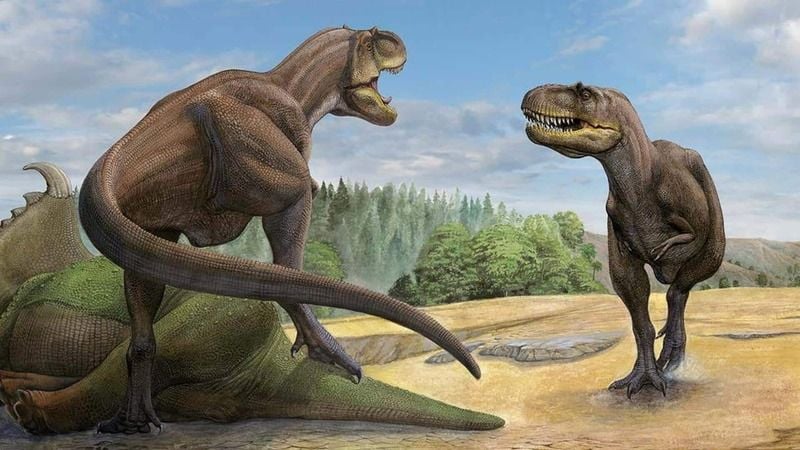Ancestor of Tyrannosaurus Discovered: Khankhuuluu
A team of Canadian and international paleontologists has added a new chapter to dinosaur history. According to published research, a new species, named Khankhuuluu, has been discovered. This species is identified as the closest known ancestor of the massive Tyrannosaurus rex. This dinosaur, which lived approximately 86 million years ago, represents the period when the Tyrannosaurus lineage evolved from small predators to the planet’s most powerful hunters.
Khankhuuluu Provides the Missing Link in Tyrannosaurus Evolution
Jared Voris and Dr. Darla Zelenitsky of the University of Calgary, who led the discovery, describe Khankhuuluu as a medium-sized, fast-moving predator. Weighing approximately 750 kilograms, this species was the size of a horse and much smaller than its giant descendants like T. rex. However, its skull structure and horn-like protrusions exhibited early examples of Tyrannosaurus characteristics.
Voris summarizes the significance of this discovery by saying, “Khankhuuluu sheds light on the evolution of Tyrannosaurus from small predators to apex predators.” According to the researchers, this species lacked bone-crushing jaws; it was a hunter who relied more on its agility. Like modern jackals, it is described as a “mesopredator”—a mid-level predator in the ecosystem.
The fossils were found in the Bayanshiree Formation in southeastern Mongolia. The remains, examined by Altangerel Perle in the 1970s, were initially mistaken for the Chinese Alectrosaurus. However, detailed analyses conducted by Voris in 2023 revealed that Khankhuuluu was an entirely different species. Its name means “dragon prince” in Mongolian—a title befitting its position in the family tree of T. rex, the “dragon king.”
Dr. Zelenitsky highlights the species’ evolutionary migration path. According to the research, Khankhuuluu or its close relatives migrated from Asia to North America approximately 85 million years ago. This migration led to the first appearance of large Tyrannosaurus species in North America. Scientists note that these transitions were much rarer than previously thought, and that Khankhuuluu is the last Asian representative of this lineage.
The research reconstructs how the Tyrannosaurus lineage evolved into the most powerful predators in Earth’s history. Khankhuuluu is not just a dinosaur—it is also a silent witness to evolution, migration, and adaptation. Paleontologists now aim to illuminate the path to the origins of Tyrannosaurus by turning their gaze to the even more ancient ancestors of this “dragon prince.”
Read More: Which Ghost of Tsushima Ending is Real?




